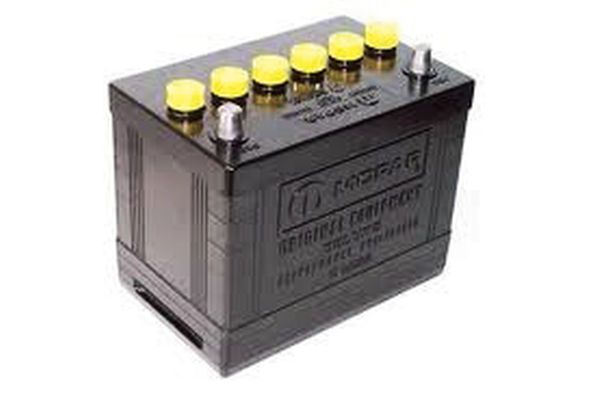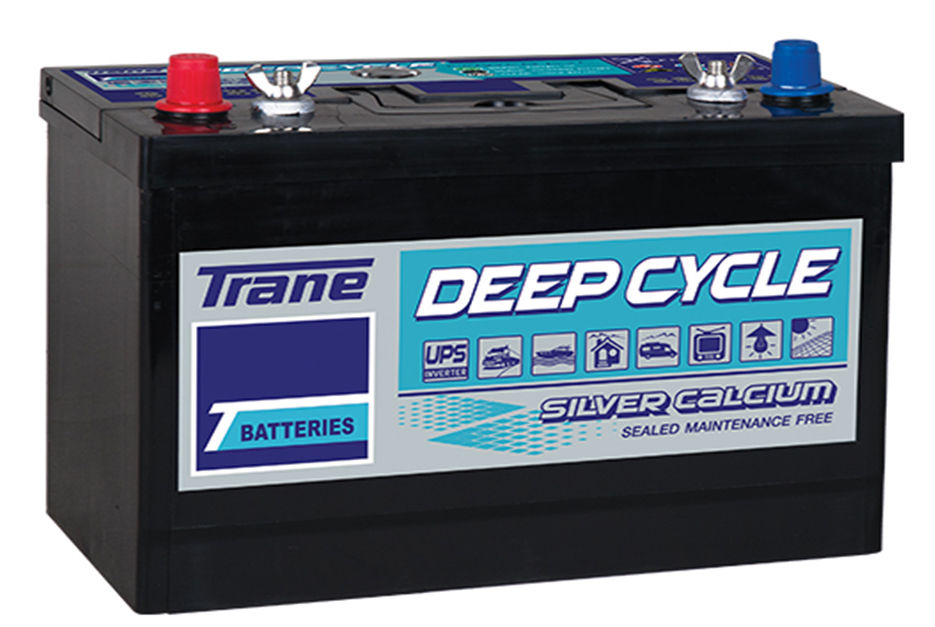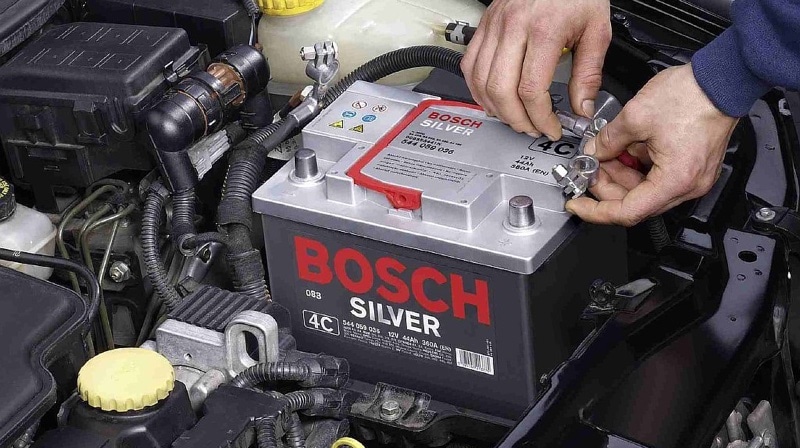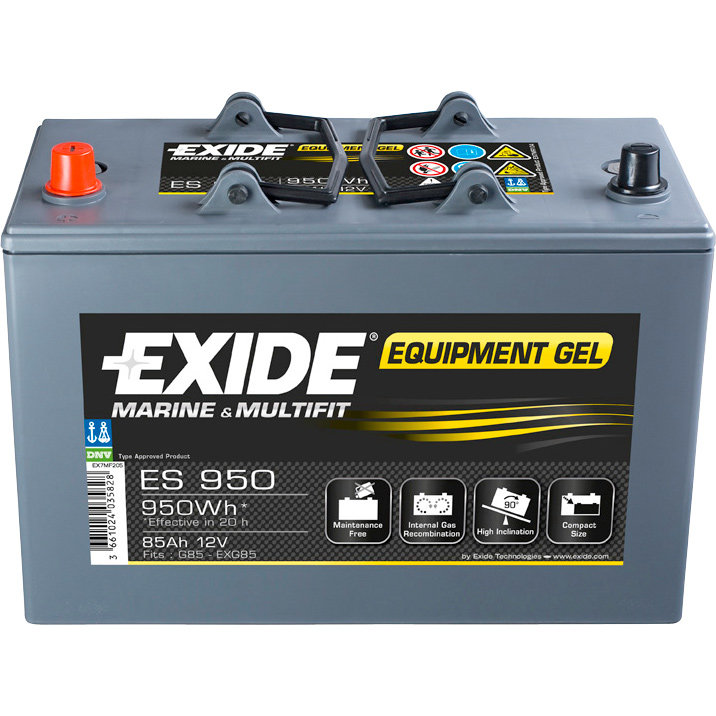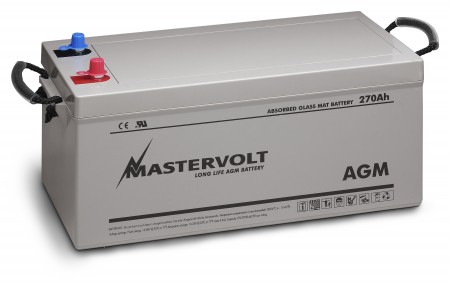Are you tired of dealing with car battery issues? Wondering why your vehicle won’t start? It might be time to have a closer look at your car battery type and size. Choosing the right battery for your vehicle is crucial to ensure optimal performance and avoid frustrating breakdowns. We’ll also delve into the factors to consider when choosing a car battery type, as well as how these choices can impact your vehicle’s overall performance. Get ready to power up your knowledge on car batteries!
Understanding Car Battery Designs
Car batteries come in various designs, each with its own unique characteristics and performance capabilities. Understanding the designs of battery terminals and battery posts is crucial for the proper functioning of your car’s electrical system. It is important to be aware of the different battery types and battery groups to ensure optimal performance.
Various Designs Used in Car Batteries
Car batteries, including lithium-ion battery groups, can be classified into different types based on their internal design, dimensions, and BCI. Some common designs include:
-
Flooded Lead-Acid (FLA) Batteries: These traditional batteries have removable caps that allow for easy maintenance and electrolyte level checks.
-
Absorbent Glass Mat (AGM) Batteries: AGM batteries use a fibreglass mat to hold the electrolyte solution, making them spill-proof and ideal for challenging environments.
-
Gel Cell Batteries: These batteries use a gel-like substance instead of liquid electrolytes, providing better resistance to vibration and shock.
The Role of Internal Components in Battery Design
The internal components of a wet cell battery, such as the electrodes, separators, and electrolyte solution, are crucial for its performance in a group. These wet cell batteries, which are part of different battery groups, work together to facilitate the chemical reactions that produce electrical energy in various car battery types.
How Different Designs Affect Battery Performance and Lifespan
The design of a car battery directly impacts its performance and lifespan. When it comes to car batteries, the group is an important factor to consider. Factors like capacity, voltage output, charging efficiency, and resistance to vibration can vary depending on the battery design. For example:
- FLA batteries offer high cranking power but require regular maintenance.
- AGM batteries provide excellent deep cycling capabilities and are more resistant to vibration.
- Gel cell batteries, as a group, have longer lifespans but may not deliver as much cranking power.
Understanding these differences is vital for choosing the right battery for your vehicle’s specific needs.
Exploring Flooded Lead Acid Batteries
Features and Construction of Flooded Lead Acid Batteries
Flooded lead acid batteries, also known as wet cell batteries, are a common type of car battery. They consist of lead plates submerged in an electrolyte solution, typically sulfuric acid. The construction includes a plastic case to hold the cells and terminals for connecting to the vehicle’s electrical system.
Pros:
-
Affordable: Flooded lead acid batteries are generally more budget-friendly compared to other battery types.
-
High capacity: These batteries offer high energy storage capacity, making them suitable for applications that require a consistent power supply over an extended period.
-
Durable: With proper maintenance, flooded lead acid batteries can last for several years.
Cons:
-
Maintenance required: Regular maintenance is necessary to ensure optimal performance and prevent damage. This includes checking fluid levels and topping up with distilled water when needed.
-
Risk of leakage: Due to the liquid nature of the electrolyte, there is a risk of leakage if the battery is damaged or not handled properly.
-
Limited mounting options: The design and size of flooded lead acid batteries may limit their mounting options in certain vehicles.
Common Applications where Flooded Lead Acid Batteries are Used
Flooded lead acid batteries find applications in various industries and vehicles due to their affordability and reliable performance. Some common uses include:
-
Automotive: Flooded lead acid batteries are widely used in cars, trucks, motorcycles, and other vehicles.
-
Marine: These batteries are suitable for marine applications such as boats and yachts.
-
Renewable energy systems: They can be utilized in off-grid solar or wind power systems to store electricity for later use.
-
Golf carts: Many golf carts rely on flooded lead acid batteries for power.
Maintenance Tips for Ensuring Optimal Performance
To prolong the lifespan and maintain optimal performance of a flooded lead acid battery:
-
Regularly check fluid levels and top up with distilled water if necessary.
-
Keep the battery terminals clean and free from corrosion.
-
Avoid overcharging or deep discharging the battery, as it can reduce its lifespan.
-
Store the battery in a cool, dry place when not in use.
Remember, proper maintenance is crucial to extend the life of your flooded lead acid battery and ensure reliable performance.
Unveiling the Benefits of Absorbent Glass Mat (AGM) Batteries
AGM batteries, also known as Absorbent Glass Mat batteries, are a popular type of battery that offers several advantages over traditional flooded lead acid batteries. These batteries have unique features and composition that make them a reliable choice for various applications.
Key Features and Composition of AGM Batteries
AGM batteries are constructed using glass mats that absorb electrolytes between the battery plates. This design ensures that the electrolyte is uniformly distributed throughout the battery, enhancing its performance and durability. The glass mats also act as a separator between the plates, preventing any movement or short-circuiting.
Advantages over Traditional Flooded Lead Acid Batteries
AGM batteries offer several advantages over flooded lead acid batteries:
- Maintenance-Free: Unlike flooded lead acid batteries, AGM batteries do not require regular maintenance such as adding water or checking electrolyte levels.
- Deep Cycle Capabilities: AGM batteries can withstand repeated deep discharges without losing their capacity. They are an excellent choice for applications that require frequent cycling.
- Vibration Resistance: The construction of AGM batteries makes them highly resistant to vibrations, making them suitable for use in vehicles or equipment with rough terrain.
- Faster Recharge Rates: AGM batteries have lower internal resistance compared to flooded lead acid batteries, allowing them to accept higher charging currents and recharge more quickly.
Suitable Applications for AGM Batteries
AGM batteries find applications in various fields due to their unique characteristics:
- Automotive: AGM batteries are commonly used in modern vehicles due to their ability to provide reliable starting power and handle high-demand electrical systems.
- Marine: The vibration resistance and leak-proof design make AGM batteries ideal for marine applications where durability and safety are crucial.
- Recreational Vehicles (RVs): AGM batteries are well-suited for RVs as they can handle the demands of onboard appliances and provide reliable power during camping trips.
Tips for Maximizing the Lifespan of AGM Batteries
To ensure the longevity of AGM batteries, consider the following tips:
- Avoid Over-Discharging: Prevent deep discharges by monitoring the battery voltage regularly and recharging it before it reaches a critically low level.
- Proper Charging: Use a charger specifically designed for AGM batteries to ensure optimal charging without overcharging or undercharging.
- Storage Conditions: Store AGM batteries in a cool and dry place to prevent self-discharge and extend their shelf life.
- Regular Testing: Periodically test the battery’s capacity and performance to identify any issues early on.
AGM batteries offer numerous benefits, making them an excellent choice for various applications where reliability, durability, and maintenance-free operation are essential.
The Power of Lithium Ion Batteries
Lithium-ion batteries are a game-changer in the world of battery technology. These batteries have some unique characteristics that set them apart from other types. Let’s explore the power of lithium-ion batteries and why they are becoming increasingly popular, especially in electric vehicles and hybrid cars.
Characteristics that make lithium-ion batteries unique
Lithium-ion batteries, also known as Li-ion batteries, are renowned for their high energy density. This means they can store a lot more electrical energy compared to other battery types. They are also lightweight and compact, making them ideal for portable devices like smartphones and laptops.
Advantages over other types
One significant advantage of lithium-ion batteries is their longer lifespan compared to traditional lead-acid batteries. They can endure hundreds of charge cycles without significant degradation. Li-ion batteries have a lower self-discharge rate, meaning they retain their charge for longer periods when not in use.
Growing popularity in electric vehicles and hybrid cars
The automotive industry has embraced lithium-ion battery technology due to its numerous benefits. Electric vehicles (EVs) and hybrid cars utilize these advanced batteries to provide efficient power storage for extended driving ranges. With advancements in battery technology, EVs are becoming more accessible and practical for everyday use.
Safety considerations when using lithium-ion batteries
While lithium-ion batteries offer many advantages, it’s crucial to handle them with care due to safety concerns. Overcharging or exposing these batteries to extreme temperatures can lead to thermal runaway or even explosions. Therefore, proper charging techniques and temperature management systems are essential when working with Li-ion batteries.
Deep Cycle Batteries: Versatile Applications
Definition and Purpose of Deep Cycle Batteries
Deep cycle batteries are a type of battery that is designed to provide a steady amount of power over an extended period. Unlike conventional batteries, which are primarily used for starting engines, deep cycle batteries are built to handle repetitive charging and discharging cycles. They have thicker plates and can withstand deeper discharges without getting damaged.
Differences Between Deep Cycle and Starting Batteries
The main difference between deep cycle batteries and starting batteries lies in their design and purpose. While starting batteries deliver short bursts of high current to start an engine, deep cycle batteries are designed to provide a constant flow of power over a longer duration. This makes them ideal for applications that require sustained energy delivery, such as powering appliances or running electronic devices in marine vessels or recreational vehicles (RVs).
Applications Where Deep Cycle Batteries Excel
Deep cycle batteries find their niche in various applications where they excel due to their unique characteristics. Some common examples include:
- Marine Use: Deep cycle batteries are commonly used in boats and yachts to power onboard electronics, navigation systems, lights, and other equipment.
- RV/Camping: These batteries serve as the primary source of power for lighting, refrigeration, water pumps, entertainment systems, and other electrical needs while on the road.
- Solar Power Systems: Deep cycle batteries store excess solar energy generated during the day for use during nighttime or when sunlight is not available.
- Golf Carts: These vehicles rely on deep cycle batteries for efficient operation throughout the golf course.
Tips for Maintaining Deep Cycle Batteries
To maximize the lifespan of your deep cycle battery:
- Avoid Over-Discharging: Regularly monitor the battery voltage levels and avoid depleting it beyond recommended limits.
- Proper Charging: Use a suitable charger specifically designed for deep cycle batteries to ensure proper charging without overcharging.
- Regular Maintenance: Clean the battery terminals, check for any signs of damage or corrosion, and ensure proper ventilation around the battery.
- Storage: If not in use for an extended period, store the battery in a cool and dry place to prevent self-discharge.
Deep cycle batteries offer reliable power solutions for various applications. Understanding their purpose, differences from starting batteries, and proper maintenance can help you make the most out of these versatile energy sources.
Importance of Understanding Battery Designs for Maintenance and Troubleshooting
Having knowledge about different battery designs is essential for proper maintenance and troubleshooting. By understanding how your car battery is designed, you can identify potential issues more effectively and take appropriate measures to rectify them. Whether it’s checking the electrolyte levels in FLA batteries or troubleshooting charging problems in AGM batteries, understanding the design will help you keep your car’s electrical system running smoothly.
.
Wet battery
Wet cell battery is classic lead acid accumulator which has been inclusively designed for the automobiles. Wet cell batteries require maintenance after some period. wet cell batteries use semi solid electrolyte and these are fully sealed. Modern day batteries of this kind are tightly sealed and do not require any maintenance. Whereas, old wet cell batteries require maintenance regularly as those were using water as electrolyte which evaporates due to hot weather and also due to extensive heat of the vehicle engine.
For the usage of wet cell batteries which use water, use distilled water as electrolyte otherwise you would end up damaging your car battery.
In the Wet category, there are two types of Sub Categories:
1. Deep Cycle battery
Deep cycle batteries commonly use in marine industry, especially designed for long lasting than others. These types of batteries can bear charges for long time, and are resistible even when fully discharged. And special feature of these batteries is they provide stable charging for long time.
2. Starting, Lighting and Ignition (SLI) batteries
These batteries have only three functions (starting, lighting and igniting). Once ignite the engine of vehicle, their alternator takes over and supplies power to system. These types of batteries are commonly available. These batteries are not tolerant once they get discharged they do not recharge as other wet batteries do.
Related: Car Battery Maintenance Tips and Tricks
Valve-regulated lead acid batteries
These batteries use lead acid as electrolyte and are tightly sealed as they do not need any kind of maintenance. Main difference of these batteries with other batteries is there electrolyte is placed in different ways and liquid cannot come out. Main disadvantage of these automobile batteries is that these cannot be repaired once damaged.
1. Gel
These batteries are very resistant to temperature, heat and vibrations. Their electrolyte is gel type liquid instead of normal liquid.
2. AGM
Absorbed glass mat batteries have been designed in a very smart way. Electrolyte is placed in glass mats which are composed of thin fibers meshed together to form a compact mat.
Key Takeaways on Car Battery Types and Sizes
Now that we have explored different car battery types and sizes, you are equipped with valuable knowledge to make an informed decision for your vehicle. Whether you choose a flooded lead acid battery, an absorbent glass mat (AGM) battery, or a lithium-ion battery, each option has its own advantages and applications. Remember, the type of battery you select depends on your specific needs and budget.
It’s crucial to consider factors such as durability, maintenance requirements, power output, and cost-effectiveness. Think about the climate in which you live and how it may affect the performance of your battery. By understanding these key takeaways and considering your individual circumstances, you can confidently select the ideal car battery for your vehicle.
FAQs
How long do car batteries typically last?
On average, car batteries last between three to five years. However, several factors can influence their lifespan including usage patterns, extreme temperatures, and maintenance practices. Regularly checking your battery’s health and replacing it when necessary will ensure optimal performance.
Can I replace my flooded lead acid battery with an AGM or lithium-ion battery?
Yes! Both AGM and lithium-ion batteries are suitable replacements for flooded lead acid batteries. They offer improved performance characteristics such as longer lifespan, faster charging times, enhanced durability against vibrations, and reduced maintenance requirements.
Are deep cycle batteries only used in recreational vehicles (RVs)?
No! While deep cycle batteries are commonly used in RVs due to their ability to provide sustained power over extended periods without being recharged frequently; they are also utilized in other applications such as golf carts, marine vessels, solar energy systems, electric wheelchairs, and off-grid cabins.
Can I install a larger-sized battery in my vehicle for more power?
It is generally recommended to stick with the battery size specified by your vehicle manufacturer. Installing a larger-sized battery may lead to compatibility issues and potentially cause damage to your vehicle’s electrical system.
How can I dispose of an old car battery safely?
Car batteries contain hazardous materials, so it’s important to dispose of them properly. Many auto parts stores, recycling centers, and even some local government facilities offer battery recycling programs. Contact your local authorities or check online resources for information on safe disposal options in your area.

